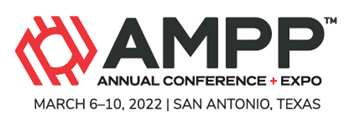Search
AMPP Conference Papers
View as
Sort by
Display
per page
Correlating of Online Corrosion Monitoring (OCM) with in Line Inspection Data for Export Crude Pipeline - Case Study
Product Number:
51324-20624-SG
Publication Date:
2024
$40.00
Correlating physical chemistry with interfacial properties: Effect of salinity on the partitioning, distribution and performance of a quaternary amine corrosion inhibitor
Product Number:
51323-19142-SG
Publication Date:
2023
$20.00
Correlating Qualitative Surface Profile Assessment Methods To Quantitative Methodology On Prepared Concrete
Product Number:
51322-17606-SG
Publication Date:
2022
$20.00
Correlation Studies between Outdoor Exposure and Accelerated Laboratory Corrosion Tests in Cold Alaskan Climate
Product Number:
51323-19384-SG
Publication Date:
2023
$20.00
Corrosion & Mechanical Properties of Nickel Based Alloy 825 Explosion Welded Plates for H2S Service
Product Number:
51323-19123-SG
Publication Date:
2023
$20.00
Corrosion And Corrosion Protection Of Water Wells
Product Number:
51322-17631-SG
Publication Date:
2022
$20.00
Corrosion and Cracking Performance of Stainless Steels and Nickel Alloys in CCS Environments
Product Number:
51324-20962-SG
Publication Date:
2024
$40.00
Corrosion And Stress Corrosion Cracking Behavior Of Super 13Cr Martensite Stainless Steel In CO2-Saturated High Temperature And High Pressure (HT/HP) Downhole Environments
Product Number:
51322-17559-SG
Publication Date:
2022
$20.00
Corrosion Assessment and Repair for Aging Concrete Infrastructure
Product Number:
51324-20860-SG
Publication Date:
2024
$40.00
Corrosion assessment of additively manufactured stainless steel 316L in 3.5 wt% NaCl
Product Number:
51323-19424-SG
Publication Date:
2023
$20.00
Corrosion Assessment of Carbon Steel Firewater Pipes after 20+ and 40+ Years in Offshore Operation
Product Number:
51324-20898-SG
Publication Date:
2024
$40.00












